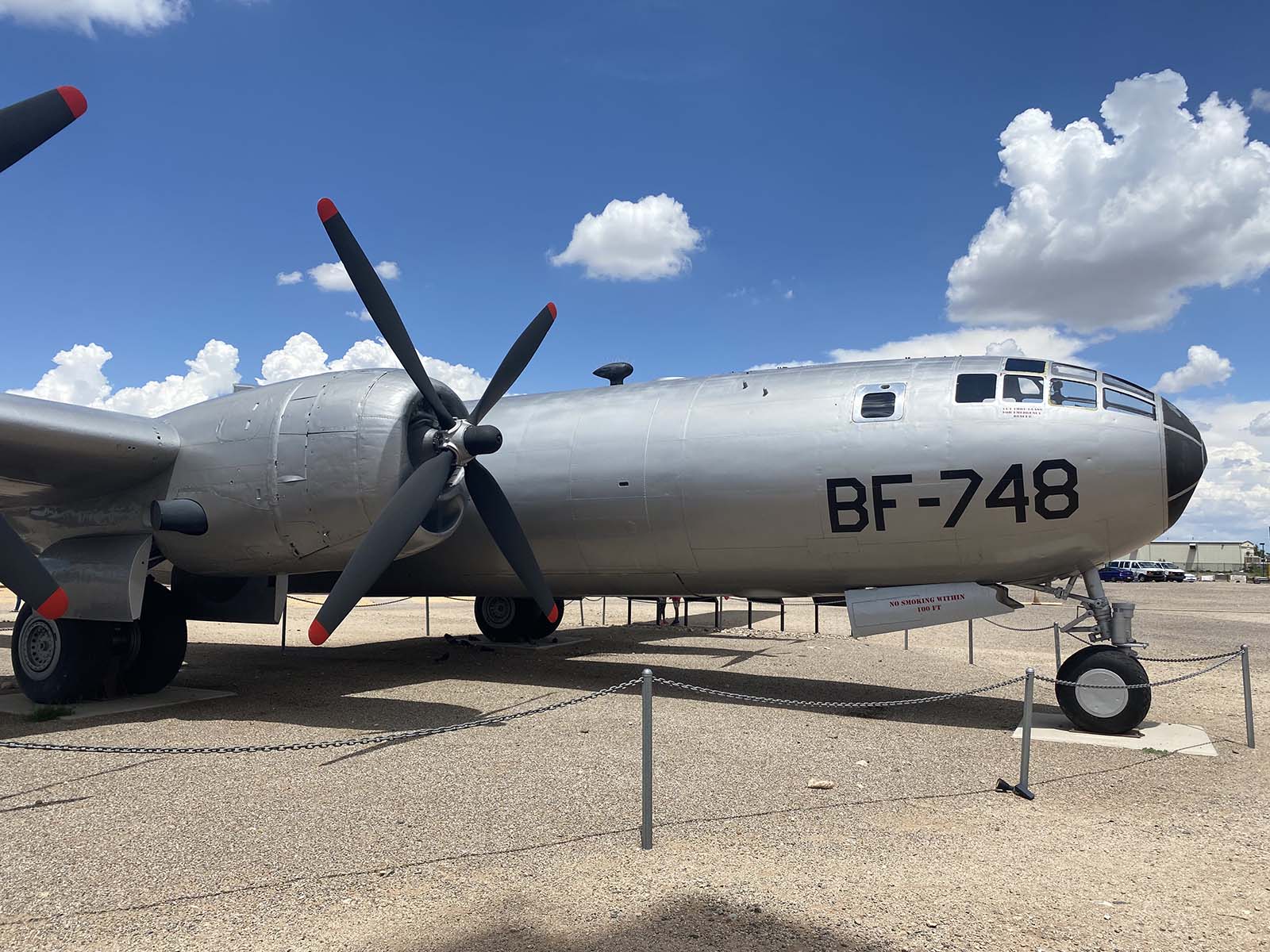B-29 Superfortress, #45-21748

Designed in 1940 by The Boeing Company, the first B-29 made its maiden flight on Sept. 21, 1942. In December 1943, U.S. Army Air Forces leadership committed the Superfortress to Asia. Its great range made it particularly suited for the long over-water flights against the Japanese homeland from bases in China. During the last two months of 1944, B-29s began operating against Japan from the islands of Saipan, Guam, and Tinian. By the end of WWI, a total of 3,970 B-29s were built.
The National Atomic Museum's B-29 was one of almost 4,000 B-29s built during World War II. Boeing delivered this plane to the Army Air Force from its Wichita, Kansas plant on August 9, 1945. This was the same day that the "Fat Man" atomic bomb, dropped by a similar B-29, destroyed Nagasaki.
After a brief period with the Air Technical Service Command at Tinker Army Air Force Base, (AAFB) Oklahoma, B-29 #45-21748 was put into storage at Davis-Monthan AAFB in Arizona. In April of 1946, the plane was reactivated to become part of the 4136th AAFB Unit (Air Material Command), at Tinker AFB.
In December 1946, this B-29 was assigned to the 509th Bombardment (Very Heavy) Group stationed at Roswell AAFB, New Mexico. The 509th was the Group that dropped the two atomic bombs on Japan. During the late 40s, the 509th was heavily involved in the post-war testing of nuclear weapons in the Pacific.
In June 1954, B-29 #45-21748 was removed from the USAF inventory and assigned to a ground school at Chanute AFB, IIlinois. After B-29s were replaced by more modern bombers, B-29 #45-21748 became part of a collection of historical war planes on display at Chanute.
In August of 1993, with the closing of Chanute AFB, the National Atomic Museum acquired the plane from the Air Force. This B-29 #45-21748 was disassembled, loaded onto seven flat bed trailers, and brought to Albuquerque.